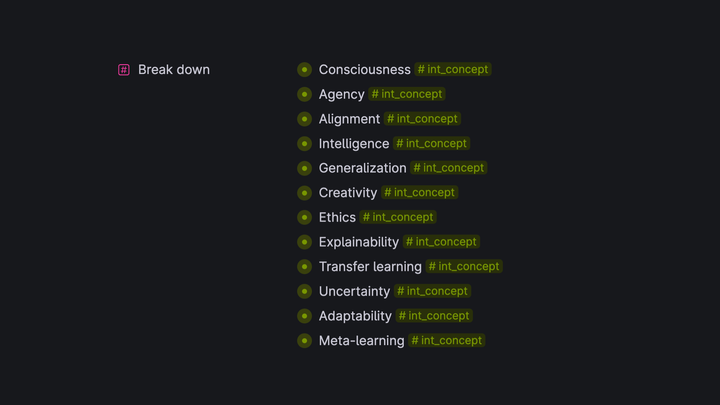The majority of first-generation Tools For Thought are writing and note-taking apps, as well as memorization tools.
Nonetheless, they helped us come a long way.
They enabled us to:
- extend our mental capacity
- deal with information overload
- improve our reasoning
Nowadays, the category is rapidly evolving. The next generation of TfTs is emerging.
I'm doing a comprehensive study on how the category changes.
Here are five key trends that will shape TfTs in the future.
Trend 1. FROM information management TO reasoning support
The key function of TfTs today is an external representation of information.
It's a good start, but clearly, there's more to it.
We're beginning to see cases where TfTs can boost our cognitive activities like:
- Abstract reasoning;
- Making inferences;
- Drawing conclusions;
- Forming an explanation (theory, system);
- Evaluating an explanation;
That Improves the efficiency of our sense-making and synthesis.
TfTs provide us the new ways to manipulate information, filter, synthesize, summarize, prompt, extract knowledge.
There are also activities in the meta-cognitive domain are yet to be influenced:
- Planning time and efforts
- Adapting approaches in problem-solving
- Changing "mental gears"
Trend 2. FROM working solo TO assisted work
"Thinking is a lonely business."
Not anymore!
We are moving to the era of assisted thinking and reasoning with the rise of GPT-3 and other language models.
The interactive component of thinking develops.
Now you can have a copilot in the knowledge work (Similar to GitHub Copilot). It can give you prompts, help to extract knowledge from large texts, automatically systematize your writing.
Special environments are emerging (like Fermat) where you can plug-in multiple copilots. They either will cooperate or compete with one another!
Trend 3. FROM individual apps TO marketplaces
The recent launch of Roam Depot (Roam's own AppStore) signals the major change in paradigm for TfTs.
Key platforms evolve into marketplaces/ecosystems for intellectual products and mind extensions.
We are now in the situation of Apple AppStore 2009.
Frameworks and algorithms would be packaged in extensions.
A new generation of developers is needed.
Market opportunities are already here!

Trend 4. FROM private graphs TO build in public
TfT industry has roots in PKM: PERSONAL knowledge management.
Many of us used to be shy and uncomfortable showing our workflows, vaults, graphs.
Regarded them as sacred.
That is also changing!
We are moving to the era of Digital gardens:
an online spaces at the intersection of a notebook and a blog.
We stream, showcase and doing public reviews of our Second Brain systems.
The Build In Public and Indie Hacking ideas are becoming increasingly relevant in the TfT community.
Trend 5. FROM text-first TO visual-spacial
TfTs are widely perceived as the text-first environments.
Think of Roam, Obsidian, Logseq.
Yet they all have a Graph feature; it works rather as an additional representation to text.
Graph forms automatically. Nodes are distributed in space by pre-defined rules or even quasi-randomly.
Some TfTs are here to challenge that!
In Heptabase and Fermat spacial representation is the foundation of experience. We spend time thinking about where one card should be located relative to another.

This way visual-spatial element harnesses a lot more information and adds more value.
There are experiments of extending TfTs into AR/Metaverse
They are still in their early stages, but they look promising →
providing new affordances and integration opportunities.
AR experiences can be utilized in information-rich environments like museums.




